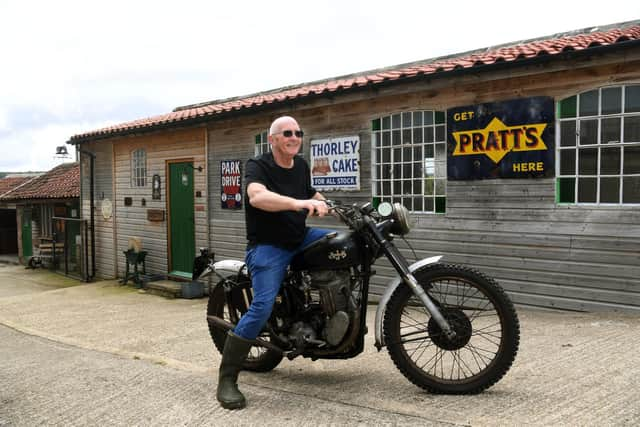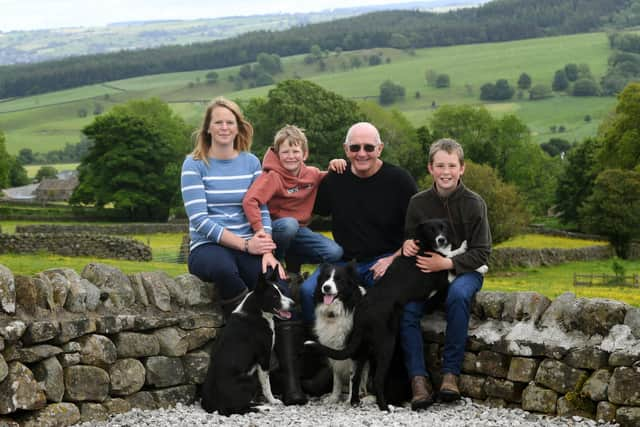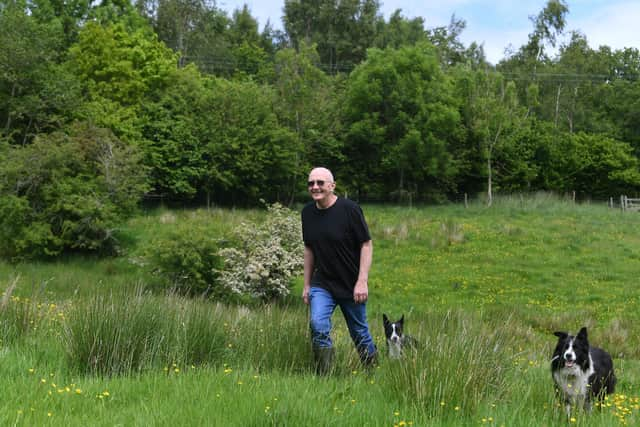Farm of the Week: Cockney banker who restored biodiversity to land in Nidderdale - thanks to an unexpected guest
Kim Harris is from Bethnal Green where his immigrant parents settled after moving from Berlin. His parents had a small tailoring business. Kim moved to the 40-acre former dairy farm of Tiplady Farm in Blazefield, near Pateley Bridge in 1988.
Kim said his epiphany, that led to his decision, came about as he was walking along Fenchurch Street in the rain.
Advertisement
Hide AdAdvertisement
Hide Ad“It was a February morning and all these people in grey suits were walking down this grey street on this grey day. They all looked completely fed up. I realised I was one of them. It was then that I turned around and went home.


“I went back to work after that, working for the Woolwich, but by then I’d said to my wife Janet that I wasn’t doing that anymore, that I wasn’t going to spend my life that way.”
But when Kim and his family first arrived at Tiplady they had what seemed an unexpected impasse, as someone else was sat in their dilapidated farmhouse.
“There was a gentleman in his 70s sitting by the fire. I was a bit surprised to see him there. I said ‘my name’s Kim and I’ve just bought this place, where do you live?’ and he said ‘my name’s Tom and I live here’.
Advertisement
Hide AdAdvertisement
Hide Ad

“Tom turned out to be our best friend, an inspiration to us all. He was a surrogate grandad to our then three young children and he taught us everything we know about farming.
“His full name was Tom Russell. He was from Walkington in East Yorkshire and he’d stood in line with his sister, when he was 14, to be hired at Hull Fair by farmers for a year at a time, going home for three days each year. He was an accomplished horseman and ploughman and he got us into Clydesdale heavy horses.
“My favourite saying of his, when he’d turn up at four in the afternoon, was ‘I’ve been coming all day and never got here’. He lived in the caravan in the field behind our house.”
Kim maintained his banking career for a short while, whilst rectifying the land at Tiplady, replenishing soil matter, planting trees and shrubs and creating a far better habitat for wildlife.
Advertisement
Hide AdAdvertisement
Hide Ad

“I wouldn’t say that our farm is a commercial enterprise. We have Highland cattle and Herdwick sheep, chickens and Clydesdale horses, but we care about the land.
“This is in no way to denigrate what the previous farmers had done here, it’s just that we wanted to bring back the biological diversity.
“The first thing we did was to take on some sheep to fix the nitrogen back in the soil. We did that initially with Welsh Halfbreds for quite a long time and from there we went, over a period, to the more slow grown livestock that allows the animals a longer life while still entering the food chain. Our Highlands go at 36 months and more; and the Herdwicks go as mutton.”
Kim said that one distinction he makes with their stock, when it is ready to go to be processed for meat, is that he takes it all direct to the abattoir himself.
Advertisement
Hide AdAdvertisement
Hide Ad“I fully understand that not everyone can operate a system that is always as benevolent to the animals as an individual like me taking stock straight to abattoir, but I do what I want to do with mine. For me that means my animals are processed within two hours of leaving the farm.”
Kim said he operates a conservation plan across the whole farm. “We move our cattle and sheep on around the farm in a form of mob grazing, but we will also leave certain fields untouched all year round. On what we call Bank Field, as it is on a banking, we have 60 species of wildflowers. I’m not afraid to take out species either. This is not rewilding, it is management. I don’t want the likes of docks and thistles.
“We have been involved and continue to be involved with conservation schemes and we started with the Woodland Grant Scheme that saw us plant 3,000 trees that link together with existing copses.
“There was virtually no wildlife when we came. We now have lots of owls, cuckoos, woodpeckers, grouse, partridge, pheasant, finches and we have two or three resident red kites. I’m currently working with the Nidderdale AONB helping coordinate the Haymeadow Project.”
Advertisement
Hide AdAdvertisement
Hide AdThere has been a shift in the balance of livestock management just lately at Tiplady as Kim’s daughter Emma’s two young sons - Callum, aged 10, and Rory, seven - have taken on the Herdwick sheep flock of 20 breeding ewes.
Emma said it is now down to her boys, who involve their grandfather Kim in all their decisions. “Callum and Rory are now in charge of the Herdwicks. They tend them every morning and sort out their worming programme with dad. They’ve shown a real passion for farming and enjoy their sheep and tractors.”
Learning and education of young people is a big thing for Kim and Janet. They have both had a long history with the Scout Association and Janet is a former teacher.
Kim said their Annual Gloucester Old Spot Run is a popular time for several families and their children.
Advertisement
Hide AdAdvertisement
Hide Ad“Each year we collect four of five weaners from a lady near Thirsk and four of five families then own a pig each, which all stay here. A designated family will come each day, parents and children together, to look after the pigs. It’s great for the children to understand where their food is coming from.”
Emma helps on the farm with her parents’ holiday accommodation which includes two shepherd’s huts and a holiday cottage.
Kim said his passions are helping young people and restoring anything he fancies back to its former glory, just as he has done with the land. A bus stop in the middle of a field and various 1930s memorabilia adorn the farm and farm buildings.
